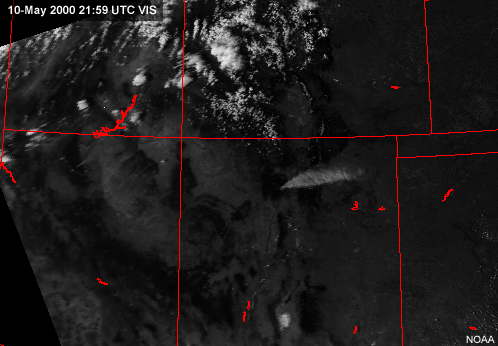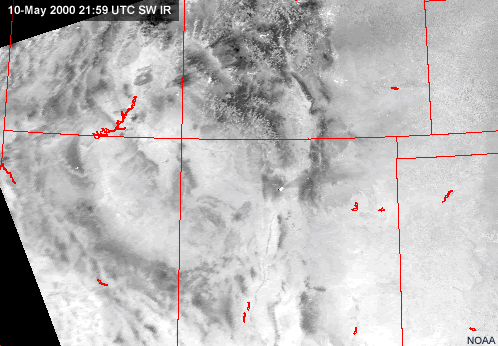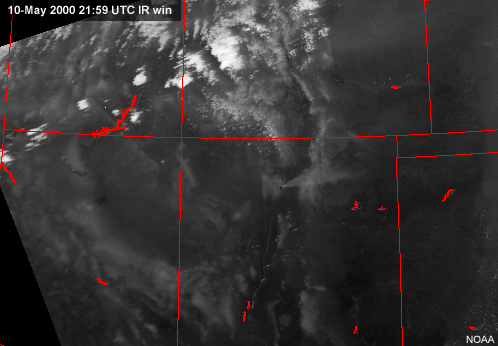


Remapped AVHRR Visible, IR Window, and Shortwave IR Imagery (Page 3 of 6)
Return to the previous menu.



The three images shown come from the raw AVHRR pass previously shown, but they have been re-projected or remapped into a stereographic projection centered on New Mexico. Notice that the distortion seen in the previous visible image is not present in the visible image shown here. The smoke plume from the fire, reflecting visible sunlight, is prominently seen.
You can also see the plume on this longwave IR window image, but here it is because smoke has cooled as a result of rising through the lower atmosphere. It is now cooler (brighter) than the land background.
The 3.7 µm image shortwave IR image is similarly reprojected and shows the white hot spot in northern New Mexico that marks the devastating Los Alamos fire in May, 2000. Besides wildfires, this channel is very useful to detect a variety of other hotspots, including fires resulting from airplane crashes, structure fires, cooling towers, and urban heat islands.